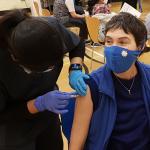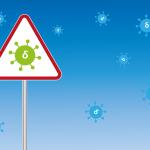“This is no time to stop tracking COVID-19.
COVID-19 vaccinations
A Two-Month Cycle Experts Can’t Explain
A mysterious pattern suggests that the U.S. Delta wave could be starting to ebb.
As always, the data from this comes from Our World in Data, and it reflects the current data as of May 1st.
Certainly, healthcare workers, and that includes physicians, nurses, all the clinical support staff, and all the infrastructure staff (yes, including administrators), are working in higher-risk conditions.
The data set continues to be drawn from Our World in Data and is based on CDC statistics for the US.
The data set continues to be drawn from Our World in Data and is based on CDC statistics for the US.
Global
The data set continues to be drawn from Our World in Data and is based on CDC statistics
Global
Before jumping into the data, some quick housekeeping. The data set continues to be drawn from Our World in Data and is based on CDC statistics. It remains reliable.












